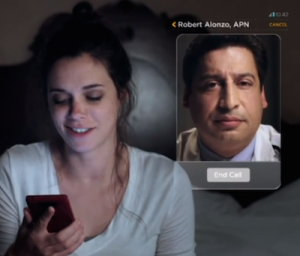 A state-side example of video comms with MDs: Verizon Wireless Virtual Visits
A state-side example of video comms with MDs: Verizon Wireless Virtual Visits
Around 4.7 million people in Europe were using some kind of connected care system by the end of 2013, according to a recent report from Berg Insight. The research firm includes traditional telecare, next-gen telecare, and telehealth systems in its report, which includes 30 countries in the region.
The growth of connected care in Europe is projected to have a 19.2 percent CAGR for the next five years. By then some 13.7 million Europeans will use some kind of connected care system.
"Traditional telecare is currently the largest and most mature of the three market segments," the firm wrote in a statement. "The next-generation telecare and telehealth market segments are in a more nascent stage but are entering a strong growth phase that is expected to last for many years to come."
The firm reports that deployment of next-generation telecare systems that include remote visits and video communication are on the rise in Europe.
“There is a strong need for solutions that enable social care and healthcare services to be delivered more cost-efficiently without compromising the quality of care,” Lars Kurkinen, Senior Analyst, Berg Insight said in a statement.
In June Berg reported that 3 million patients around the world were using connected home medical monitoring devices by late 2013. Berg projected that this number would jump to 19.1 million by 2018, according to that June report. Remote patient monitoring revenues reached $5.8 billion (4.3 billion euros) in 2013 and are expected to grow to $26.4 billion (19.4 billion euros) by 2018, Berg said at the time.
Around 76 percent of those revenues came from connected medical devices. For the June report, Berg only looked at patients who used home monitoring devices to collaborate with a professional caregiver. The research firm did not include patients that used the devices for personal health tracking.

















